The Sun is the star at the centre of our Solar System and its sunlight provides energy which is essential for life on Earth. The two key natural units of measuring periods of time, the year and the day, are both based upon the Earth’s motion with respect to the Sun and in many ancient cultures the Sun was regarded as a god.
Helios, the ancient Greek Sun god, who drove the chariot of the sun from the East to West across the sky each day.
The solar system is believed to have formed about 4.6 billion years ago, when a large cloud of dust and gas collapsed. More than 99% of the matter from the original cloud formed an object which became the Sun. The remaining material became the planets, asteroids, comets and other bodies within the Solar system.
This post talks about what will happen to the Sun for the remainder of its lifetime, how it will evolve over time and the implications for life on Earth.
What sort of star is the Sun?
The Sun is one of 400 billion stars in the Milky Way galaxy (ref 1). If we plot how the brightness of stars varies with the temperature of their surface for a sample of stars in the galaxy then we get a diagram like the one below, which astronomers call a Hertzsprung Russell diagram.
In the diagram above the axes are as follows
- The x-axis gives the surface temperature of the star.
- The y-axis gives the brightness of the star, on a scale where the brightness of the Sun = 1. So a value of 100 means that the star is 100 times brighter than the Sun, 10,000 means that the star is 10,000 times brighter than the Sun etc.
Most of the stars in the galaxy lie in the region of the diagram which is labelled “Main Sequence”. In the top left of the main sequence are very hot bright blue stars, known as blue giants. In the bottom right of the diagram are relatively cool (even though they still have a surface temperature of around 3,000 degrees) dim stars known as red dwarfs. The Sun, which is marked with an “X” in the diagram, has a surface temperature of around 5,500 degrees Celsius and is an average yellow star. The stars above and below the main sequence are stars at the end of their lives and are called white dwarfs, red giants and super-giants and I’ll talk about them later in this post.
How does the Sun generate its energy?
Before I talk about how the Sun generates its energy I’ll give a brief overview of atoms. For more details see my previous post: A Brief History of the Universe.
All ordinary matter is made up of atoms which consist of a nucleus, which has a positive electric charge, surrounded by negatively charged electrons.
The nucleus, which contains nearly all the mass of an atom, consists of a number of positively charged particles called protons and neutrons which have no charge. Because the electrons have a negative charge, and the number of protons and electrons in an atom is always the same, the atom has a net charge of zero.
- The number of protons is called the atomic number and determines which element it is. You may remember from high school chemistry that this is its position in the periodic table.
- The number of neutrons in the nucleus does not affect the chemical properties of the atoms. In fact, all elements have different versions of themselves called isotopes, which have a different numbers of neutrons but the same number of protons.
The simplest possible atomic nucleus is that of hydrogen, which consists of a single proton. Atoms which have 2 protons (regardless of the number of neutrons) are helium atoms, 3 protons are lithium atoms and so on. The naturally-occurring element with the highest atomic number is uranium, which has 92 protons.
An atom of the most common isotope of carbon.
At very high temperatures, such as those found in the Sun, the electrons are not bound to the nucleus but can move around freely. This is known as a plasma.
The Sun generates energy by combining the nuclei of four hydrogen atoms to produce a nucleus of a single helium atom (See Note 1). These reactions can only take place at the Sun’s core, where the temperature is high enough, about 15 million degrees Celsius.
The diagram above shows the internal structure of the Sun. The core where all the Sun’s energy is generated is coloured white and is quite small, only about 20% of its diameter. This works out as less than 1% of the Sun’s total volume. As you get further from the core the temperature drops and the surface it is a mere 5,500 degrees Celsius.
Future evolution of the Sun
In about 5 billion years time the Sun will have exhausted all the hydrogen at its core. The core, which by then will consist of helium nuclei, will then shrink and nuclear reactions will take place in a large shell outside the core, rather than the core itself. The outer regions of the Sun will greatly expand and it will become a red giant.
The diagram above shows the Sun in the red giant phase of its lifetime.
It is unclear exactly how large the Sun will get when it becomes a red giant. Current estimates are that it will expand to 100-250 times its current diameter (ref 2). If we take the lower value, the innermost planet Mercury (but not Venus and the Earth) will be swallowed up by the Sun. At the higher value, the Earth would also be inside the Sun.
With the lower value, where the Sun expands to 100 times its current radius value, on Earth the Sun would appear 10,000 times larger than it is today. The surface temperature of the Earth would be around 1500 degrees Celsius, hot enough for it glow a dull red colour. The Earth would have lost its atmosphere long before this and will be a bone dry scorched airless desert on which it will be impossible for life to exist.
What sunrise might look like in 5 billion years time. The sky would be black in daytime because the Earth would have no atmosphere
After the red giant phase
The Sun will remain as a red giant, converting hydrogen to helium in an expanding shell around its core for about 1 billion years. During this time more and more helium will accumulate around the core, making the mass of the core grow. The core will gradually get hotter and more dense due to the weight of helium around it.
When the temperature of the core reaches 100 billion degrees, the intense temperatures and pressures will start another type of nuclear reaction in the core as shown in the diagram below. In this reaction three helium nuclei will combine to produce the nucleus of a single carbon atom.
When all of the helium in the core has been converted into carbon, nuclear reactions in the core will once again stop. The Sun will start to convert helium into carbon in a shell outside its core but will become more and more unstable. It will vary widely in brightness as it flares up and ejects some of its outer layers into space and then contracts again. Eventually the whole of the outer regions of the Sun will be blown away forming a glowing shell of plasma called a planetary nebula.
A planetary nebula
The planetary nebula will continue to cool and expand, getting fainter and fainter. After about 10,000 years it will have faded away altogether and spread out into the space between the stars, which astronomers call the interstellar medium. The planetary nebula will contain elements such as carbon, nitrogen and oxygen plus other heavier elements which were manufactured in the Sun. See note 2. Some of this material may in billions of years time find it way into gas clouds which condense and form new stars and planets. A form of stellar recycling!
White Dwarf
At the centre of the planetary nebula the remnant of the Sun’s core will collapse into an extremely dense hot star called a white dwarf. The mass of the white dwarf will only be 30% of the original mass of the Sun. The remaining 70% of the Sun’s mass will have been lost into space as stellar wind or blown away as the planetary nebula.
White dwarfs are very compact. The white dwarf formed from the collapse of the Sun’s core will only be roughly the same size as the Earth, but will have about 100,000 times more mass – 1 litre of white dwarf material would have a mass of around 550 tons. At such densities ordinary atomic matter cannot exist, so white dwarfs are thought to consist of a special form of matter called degenerate matter which does not consist of atoms but rather a sea of atomic nuclei packed together with the electrons floating freely between them.
A white dwarf is essentially a dead star and does not undergo any nuclear reactions. It is very hot when it is first formed from the core of a star and the light we see from a white dwarf is this stored heat being radiated away. Over billions of years a white dwarf gradually cools down and becomes fainter and fainter and eventually will become undetectable. For more information on white dwarfs click here.
Implications for life on Earth
It is clear that any form of life which is found on Earth could not persist while the Sun is in its red giant phase. In fact the Earth is likely to become uninhabitable well before then because the Sun’s brightness is gradually increasing at a rate of 1% every 100 million years (ref 3). At some point within the next billion years a tipping point will be reached where a runaway greenhouse effect will occur to make the Earth so hot as to be uninhabitable.
However, these timescales are so huge that I believe that long before this occurs life on Earth is likely to have spread to other stars and planetary systems within our galaxy. This is such a large topic that I will discuss this further in my next post.
Notes
1 Although the net result is that four hydrogen nuclei or protons combine to form a helium nucleus. This does not occur in a single step. In this reaction which is called a proton-proton chain reaction takes place in a number of stages. See http://hyperphysics.phy-astr.gsu.edu/hbase/astro/procyc.html for more details.
2 Although the main nuclear reactions taking place in the Sun produce helium (when it is on the main sequence) and in later red giant stage carbon, other less common nuclear reactions take place which produce amounts of other elements such as oxygen, neon, nitrogen, magnesium.
References
1) Cain, F (2013) How Many Stars are There in the Universe?, Available at:http://www.universetoday.com/102630/how-many-stars-are-there-in-the-universe/
2) http://www.scientificamerican.com/article/the-sun-will-eventually-engulf-earth-maybe/
3) http://www.redorbit.com/news/science/1113029594/earth-oceans-will-dry-up-in-a-billion-years-121713/


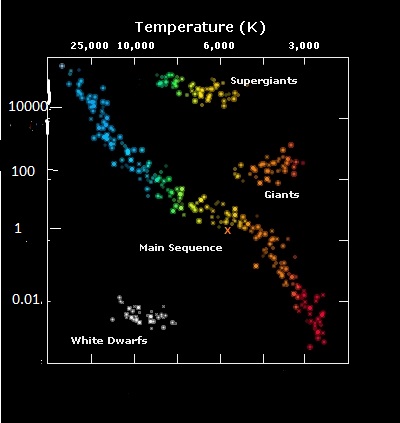
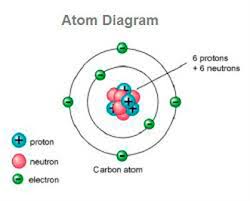
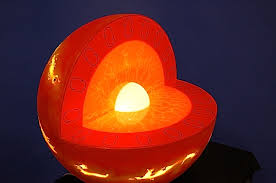
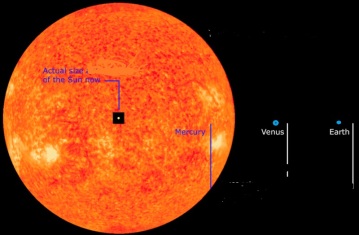
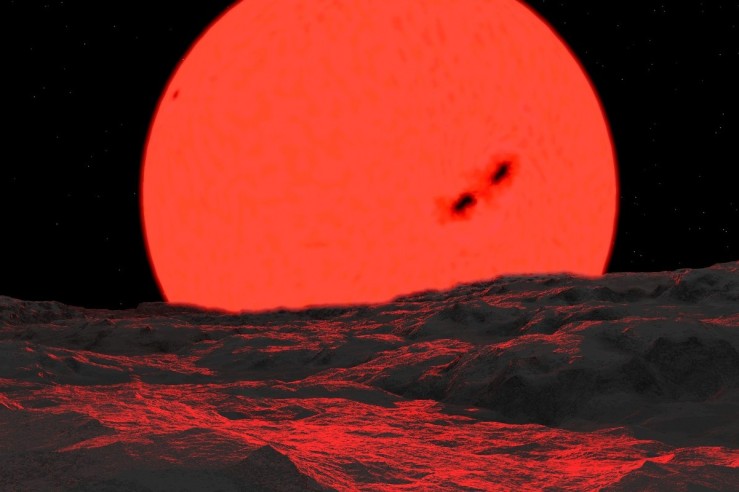
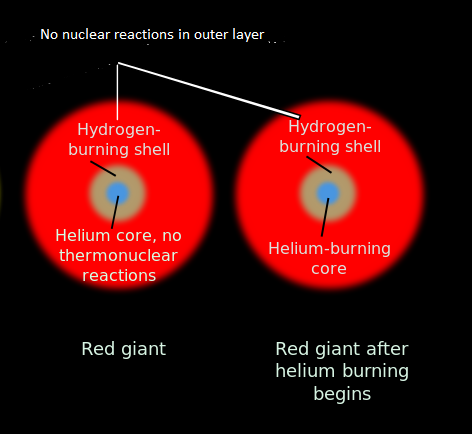
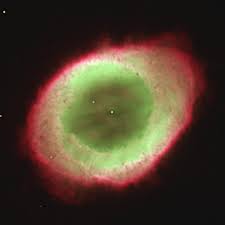
[…] করতে পারি। . তথ্য সূত্রঃ NASA Mission Wikipedia Explaining science BBC Universe today https://spaceplace.nasa.gov/barycenter/en/ Etc. […]
LikeLike
[…] Sun generates energy by nuclear reactions which occur at its dense hot core .It produces a massive 382.8 trillion trillion (3.828 x 1026 ) watts of electromagnetic […]
LikeLike
[…] Solar generates power by nuclear reactions which occur at its dense hot core .It produces an enormous 382.eight trillion trillion (three.828 x 1026 ) watts of […]
LikeLike
[…] Solar generates power by nuclear reactions which occur at its dense hot core .It produces an enormous 382.eight trillion trillion (three.828 x 1026 ) watts of […]
LikeLike
[…] Sun generates energy by nuclear reactions which occur at its dense hot core .It produces a massive 382.8 trillion trillion (3.828 x 1026 ) watts of electromagnetic […]
LikeLike
It is so big and complicated and so way beyond my little brain that it would be insane to even try an comment on things so gigantic. I can only read this with awe and know that I will not be around to experience it. It is of the utmost interest to me and love reading it.
LikeLike
[…] you can download a huge 58-megapixel TIFF file of Bubble Nebula (94 mb) and read more here about the future of our […]
LikeLike
Hey Pretty nice, cool and neat blog. Keep up the great work….
LikeLike
Thanks for your comment
The Science Geek
LikeLike
[…] described in my previous post (The Future of the Sun), in about 5 billion years time the Sun will swell up to at least 100 times its current diameter and […]
LikeLike
This is a really great, clear and concise site. Excellent to have the real science explained so well. Thanks for your like on my “Oodles” site, which is not so scientific, and is generally a satire on our apparant inability to come to terms with reality, but I hope you enjoy it!
LikeLike
Thank you and yes I’ll keep an eye on your “Oodles” site
The Science Geek
LikeLike
astronomy is so great. it excites the wonder within. great blog. I love that red run black sea picture! could I borrow it sometime? no pressure, idk how that works I just wanted to ask ❤
LikeLike
Thanks very much.
Glad you enjoyed reading the blog. I have plenty of more posts planned. Please feel to borrow/use any of the text or pictures in my blog.
The Science Geek
LikeLiked by 1 person
Reblogged this on THE BIOLOGY ELITE and commented:
This would make an interesting read…
LikeLike
So the Earth is about 4.6 billion years old, but has only about a billion years more as a life-sustaining entity. That helps to put our current concerns about “sustainability” into some context.
LikeLike
Understandable science … thank you. 🙂
LikeLike
That was an interesting post. Nicely done.
I had some fun recently playing with images from the Hubble archives. I learned how to combine 3 greyscale images of an object into one with color. Several of those were nebulae like you described above. If you are interested in seeing some of them, they are here. http://bit.ly/1CGkVrB
Thanks for the good post.
LikeLike
Thank you,
Planetary nebulae are truly beautiful objects and it is fascinating to think that much of the matter in the Sun is destined to become part of one.
The Science
LikeLike
Even cooler than that is what will happen to the Earth before the Sun reaches that phase. I quote from Wikipedia:
“Before this happens, most of Earth’s atmosphere will have been lost to space and its surface will consist of a magma ocean with floating continents of metals and metal oxides as well as icebergs of refractory materials, with its surface temperature reaching more than 2,400 K (2,130 °C).”
LikeLike
Thanks for your interesting comment.
There is a significant range in the estimates of the exact temperature the Earth will reach when the Sun becomes a red giant. The value I quoted in the post of 1,500 degrees Celsius is very much at the lower end ! One thing is clear is that it will far too hot to sustain life.
The Science Geek
LikeLike